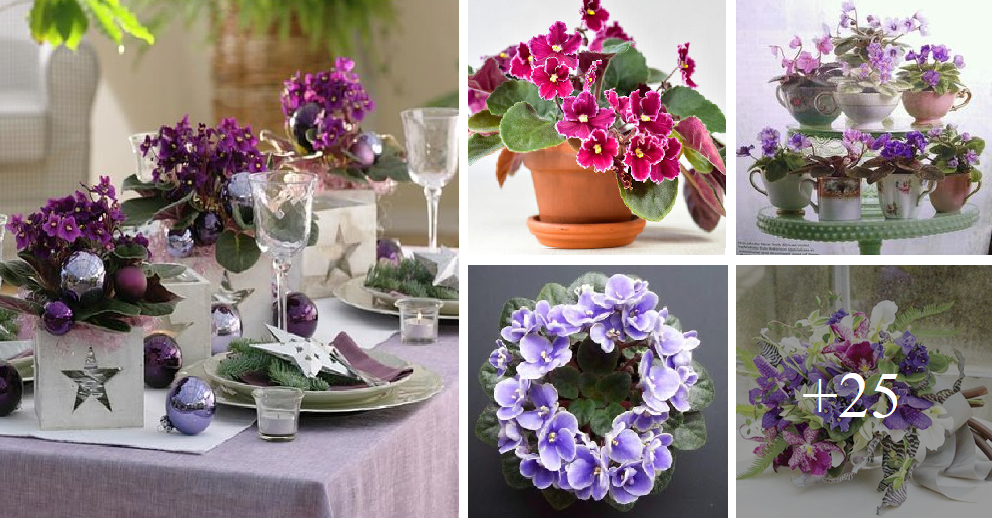
African violets are native to East Africa and originate from the tropical rainforests of Tanzania and Kenya. In 1892, German colonial officer Walter von Saint Paul-Illaire identified these plants and sent seeds back to Germany. The genus came to be known as Saintpaulia, although the plants have recently been recategorized into another genus, Streptocarpus. Despite their common name, they are not a type of violet, but they do produce vibrant, violet flowers. Read more about these delicious plants here!
African violets do best and produce the most blooms in bright, indirect light. Although they are generally easy to take care of, they can go through fiddly spells. Don’t be discouraged!
PLANTING
How to Plant African Violets
You can use a real African violet potting mix or an all-purpose potting soil, as long as it is well-draining. This is how you create your own mix.
Keep African violets planted in small pots and replant every few years to mix in fresh soil. Being a little pot-bound encourages African violets to flower more, so don’t be too quick to give them more space.
The soil should be loose and well-drained and a high content of organic matter is a plus. Learn about organic soil amendments.
When replanting African violets, do not plant them deeper than they were already planted and be careful not to bury the crown of the plant. African violet stems can be susceptible to rotting if kept too moist.
African violet
GROWING
How to care for African violets
Watering
Keep the soil slightly moist, but be careful not to overwater, as African violets’ tender stems are very susceptible to rot.
Use room temperature water, as chilled water can leave marks on the leaves.
Leaves are susceptible to rot and fungal spots if stored in high humidity, so water African violets from the bottom to avoid getting excess water on the foliage.
Lighting
African violets prefer bright, indirect light. Avoid direct sunlight and keep them at least a few meters away from bright south- or west-facing windows. An east or north facing window gives them the best lighting without the risk of burning their delicate foliage.
Artificial lighting also works well. Use fluorescent or LED lights to supplement natural lighting.
Thin, dark green leaves and leggy stems tell you that the plant is getting too little light; pale green or faded leaves indicate too much light.
Fertilization
During the active growing season (spring and summer), fertilize every two weeks with a high phosphorus plant food. Start fertilizing only when the plant seems to need an extra boost (slow, thin growth; pale or yellowing leaves).
Overfertilizing is a more common problem than underfertilizing, as most soil mixes come with lots of nutrients.
General care
Many varieties prefer warm conditions (65°F/18°C or warmer) although some are more tolerant of cooler conditions. In any case, keep them away from draughty windows in the winter.
Plants should be moved to larger pots as they grow, but keeping African violets lightly rooted can encourage them to flower. A sign that your violet needs replanting is wilted leaves.
The fuzzy leaves have a tendency to collect dust and dirt. Brush them off gently with a small, soft brush.
Blooming problem? Check out our tips on how to keep your African violets blooming.
